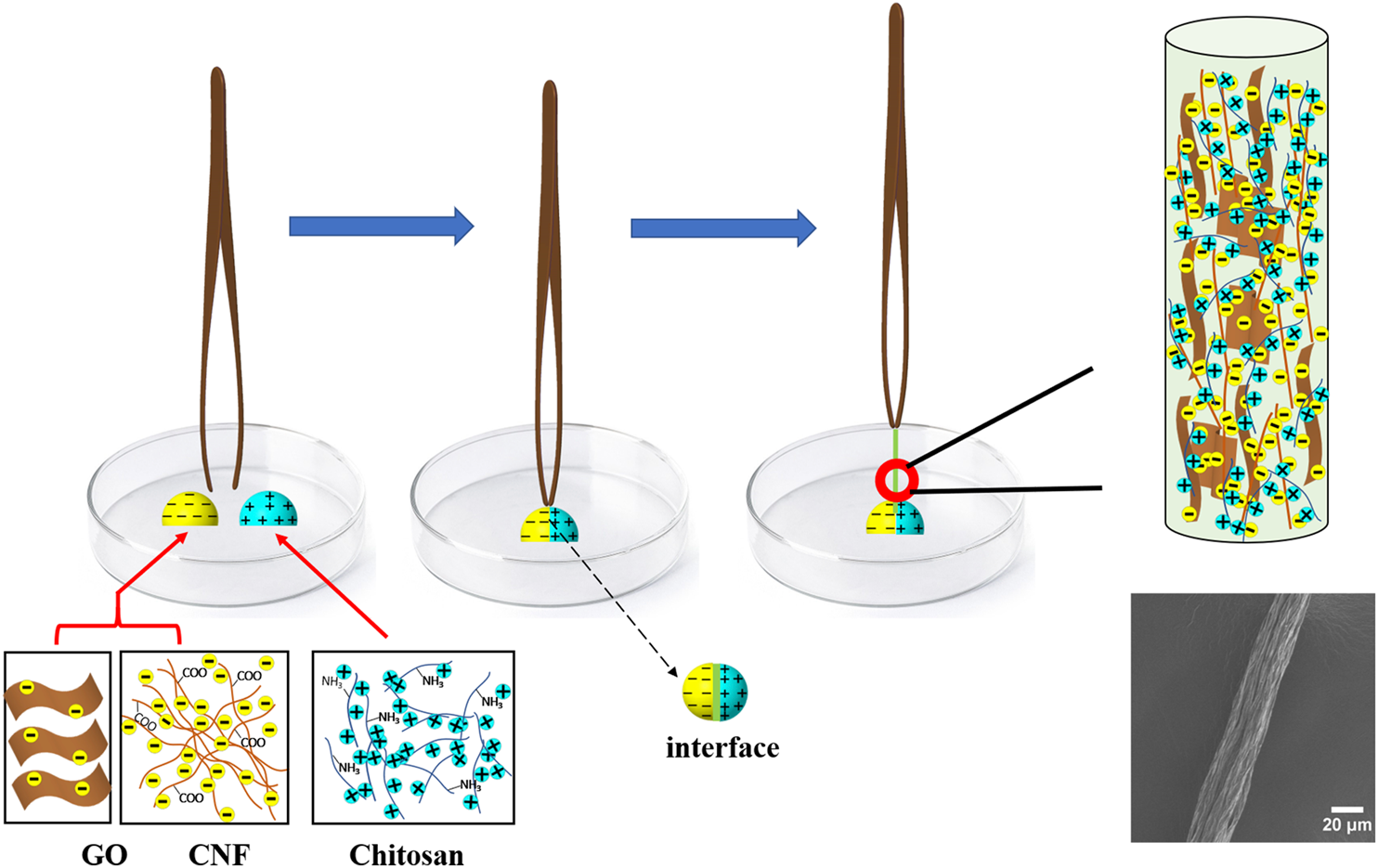Published online by Cambridge University Press: 08 January 2020

Graphene-based flexible and wearable supercapacitors have been produced by wet spinning, in which organic solvent coagulating bath was prerequisite and spacers were usually incorporated to improve the electrochemical property but sacrificing the mechanical property. In this work, a nonorganic solvent spinning technology named as interfacial polyelectrolyte complexation (IPC), which was based on the spontaneous self-assembly of two oppositely charged polyelectrolyte solutions/suspensions to form continuous fibers on drawing in their interfaces, was proposed to fabricate graphene fiber–shaped electrodes for supercapacitors. Due to the excellent mechanical performance and hydrophilicity, cellulose nanofibrils (CNFs) were added to serve as an efficient reinforcing agent and spacer of graphene fiber electrodes. Consequently, the mechanical performance and specific capacitance of the fibers were improved but electrical conductivity was declined. Taking overall consideration, CNF/rGO60 fiber electrode possessed a superior integrated performance with a capacitance of 182.6 F/g, tensile strength of 480 MPa, and electrical conductivity of 5538.7 S/m. The IPC spinning provided an environmentally friendly strategy for the fabrication of fiber-shaped functional devices.